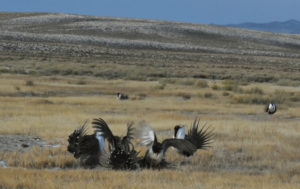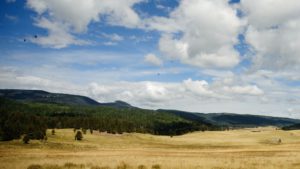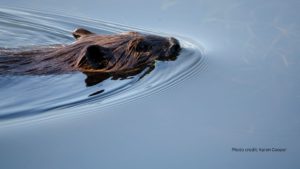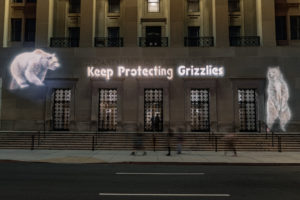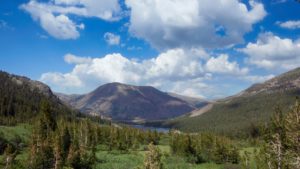For immediate release
May 22, 2024
Contacts:
- Cyndi Tuell, Western Watersheds Project, 520-272-2454, cyndi@westernwatersheds.org
- Chris Smith, WildEarth Guardians, 505-395-6177, csmith@wildearthguardians.org
- Maggie Fusari, Tucson Herpetological Society, tucsonherps@gmail.com, and Desert Tortoise Council, info@deserttortoise.org
- Matthew Bishop, Western Environmental Law Center, 406-324-8011, bishop@westernlaw.org
Wildlife Groups initiate legal action: Feds too slow to protect Sonoran desert tortoise
Species threatened by climate change, livestock grazing, drought, invasive species, development
TUCSON, Ariz.—Today, WildEarth Guardians, Western Watersheds Project, and the Desert Tortoise Council and Tucson Herpetological Society, represented by the Western Environmental Law Center, are asking the U.S. Fish and Wildlife to reconsider its 2022 decision to deny protective status to the tortoise in the groups’ 60-day notice of intent to sue.
The groups are asking the Service to take another look at the imperiled status of the tortoise, including the most recent and best available science on the threats to the species now and into the foreseeable future. According to the groups, the population and habitat models the Service used to inform its 2022 decision were flawed and the agency failed to adequately consider the impacts of climate change, habitat loss from renewable energy development and off-road vehicle use, and damage to habitat caused by livestock grazing.
“The Sonoran desert tortoise is an icon of Arizona that the public knows and loves,” said Cyndi Tuell, Arizona and New Mexico director for Western Watersheds Project. “We worry that the Fish and Wildlife Service has used flawed models to assure the public that the population is going to be fine, when in fact this slowly reproducing animal may be on the brink of extinction and by the time the Service figures that out, it will be too late.”
The Sonoran desert tortoise is a distinct species of desert tortoise, separate from the Mojave desert tortoise. Sonoran desert tortoises are found in desert scrub habitats in Arizona and Mexico, east and south of the Colorado River. In 2010, in response to a petition from the groups to list the species under the ESA, the Service found it “warranted” for listing but placed it on the candidate list, without protections, due to “higher priorities.”
In 2015, the Service reversed its decision and determined the species “not warranted” for listing based mainly on a candidate conservation agreement that does not include binding commitments from the parties involved to take conservation actions, or any regulatory requirements to conserve the tortoise. In 2019, WildEarth Guardians and Western Watersheds Project sued the Fish and Wildlife Service because the agency failed to consider science on climate change and livestock grazing, among other factors. The Service settled that lawsuit and agreed to reconsider whether the tortoise deserved ESA protection, and in 2022, the Service used flawed population and habitat models to determine the species is not at risk.
“The risk of the Sonoran desert tortoise going extinct has only increased since 2010 when U.S. Fish and Wildlife Service first considered listing the species,” said Chris Smith, wildlife program director for WildEarth Guardians. “The agency’s change of heart in 2015 and its doubling down on that decision in 2022 ignored the science and places this iconic species in an incredibly perilous position.”
“The Endangered Species Act is one of the most important conservation laws in the United States and can be a valuable tool to stem the extinction crisis, but only if the Fish and Wildlife Service is willing to base its decisions on a broader interpretation of the risks a species faces,” said Dr. Margaret Fusari with the Desert Tortoise Council and Tucson Herpetological Society. “When the decision states but then ignores the admitted risks from climate change and instead bases the decision on models that are speculative due to a lack of field data—this by the direct admission of the authors—they are leaving this animal on the fast track to extinction.”
“The agency’s decision was flawed from the start because it was based on a purely speculative and overly optimistic population estimate,” said Matthew Bishop, an attorney with the Western Environmental Law Center representing the groups. “The agency also severely downplayed likely future effects to the tortoise from increased drought frequency and severity.”
The group’s letter asks the Fish and Wildlife Service to make another attempt to comply with the ESA. If the agency fails to do that, the groups will consider whether to bring the issue before a federal judge.
###
WildEarth Guardians (www.wildearthguardians.org) is a conservation non-profit whose mission is to protect and restore the wildlife, wild places, wild rivers, and health of the American West. Guardians has offices in Arizona, Colorado, Idaho, Montana, New Mexico, Oregon, and Washington, and over 231,000 members and supporters worldwide.
The mission of Western Watersheds Project (www.westernwatersheds.org) is to protect and restore western watersheds and wildlife through education, public policy initiatives, and legal advocacy.
The Desert Tortoise Council (deserttortoise.org) was established in 1975 to promote conservation of the desert tortoise in the deserts of the southwestern United States and Mexico.
The Tucson Herpetological Society (tucsonherpsociety.org) was established in 1988 and is dedicated to conservation, education, and research concerning the amphibians and reptiles of Arizona and Mexico. The Western Environmental Law Center (westernlaw.org) uses the power of the law to foster thriving, resilient western U.S. lands, waters, wildlife, and communities in the face of a changing climate. We envision a western U.S. abundant with protected and interconnected ecosystems, powered by renewable energy, and cared for by communities brought together in an ecology of kinship.

